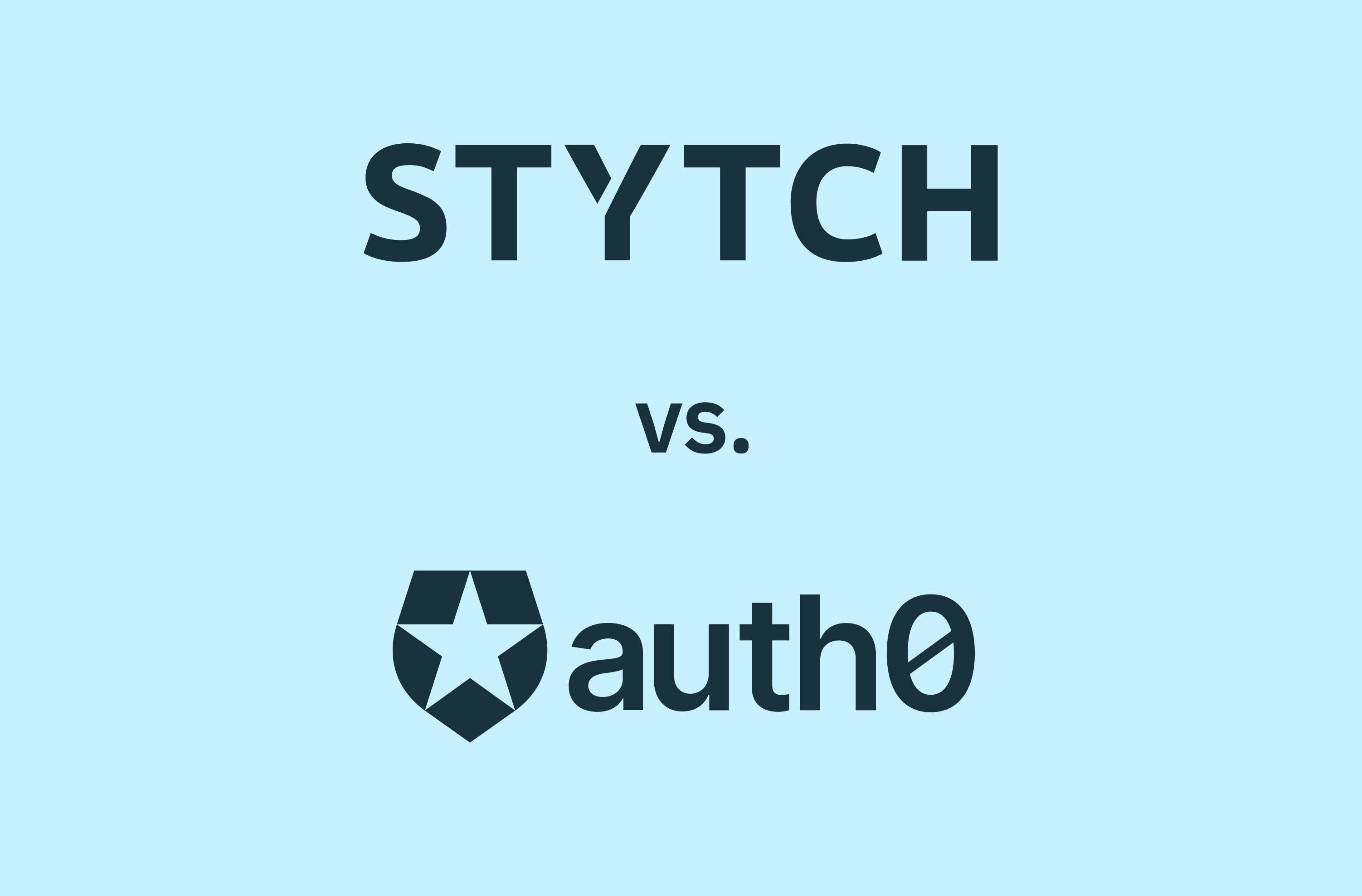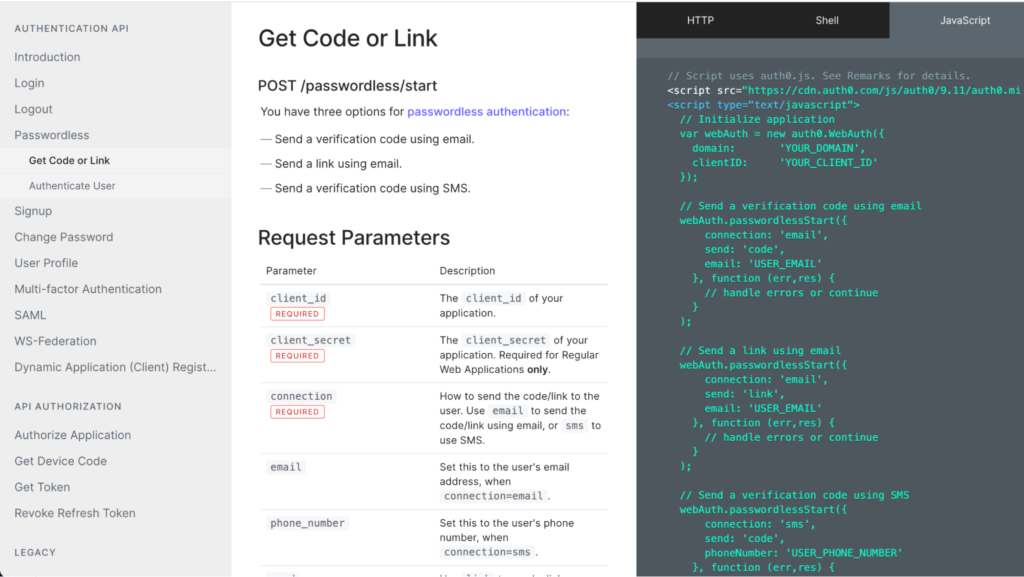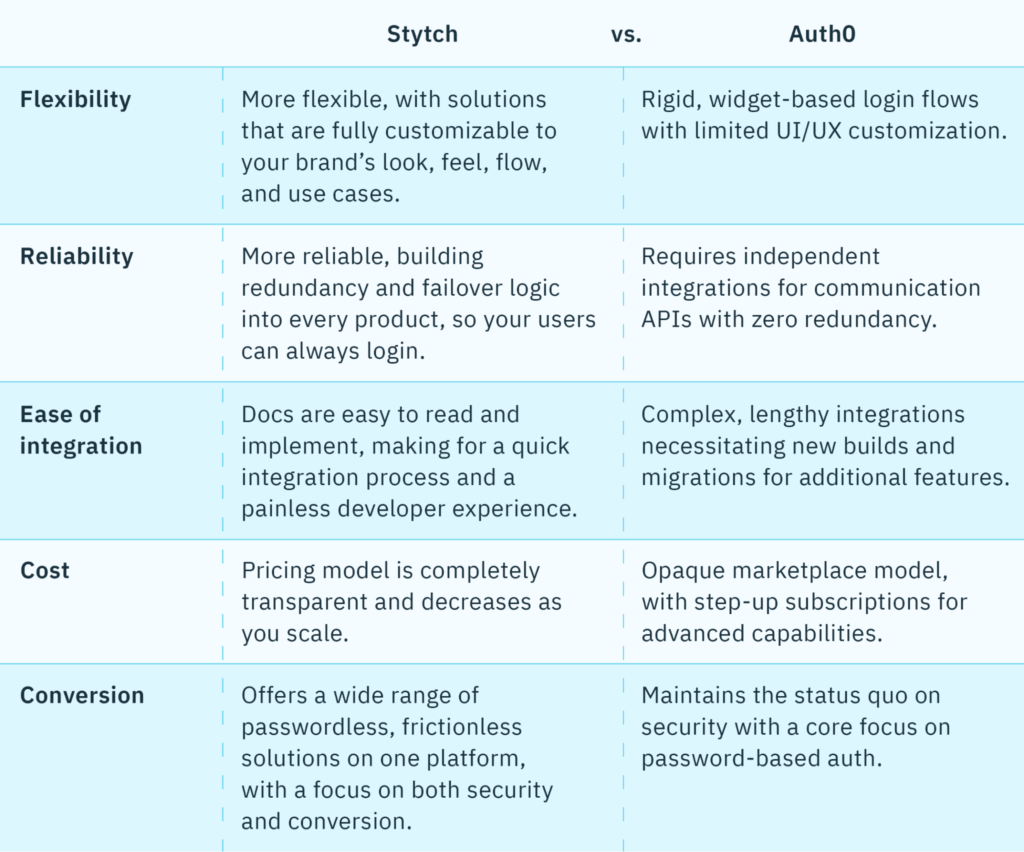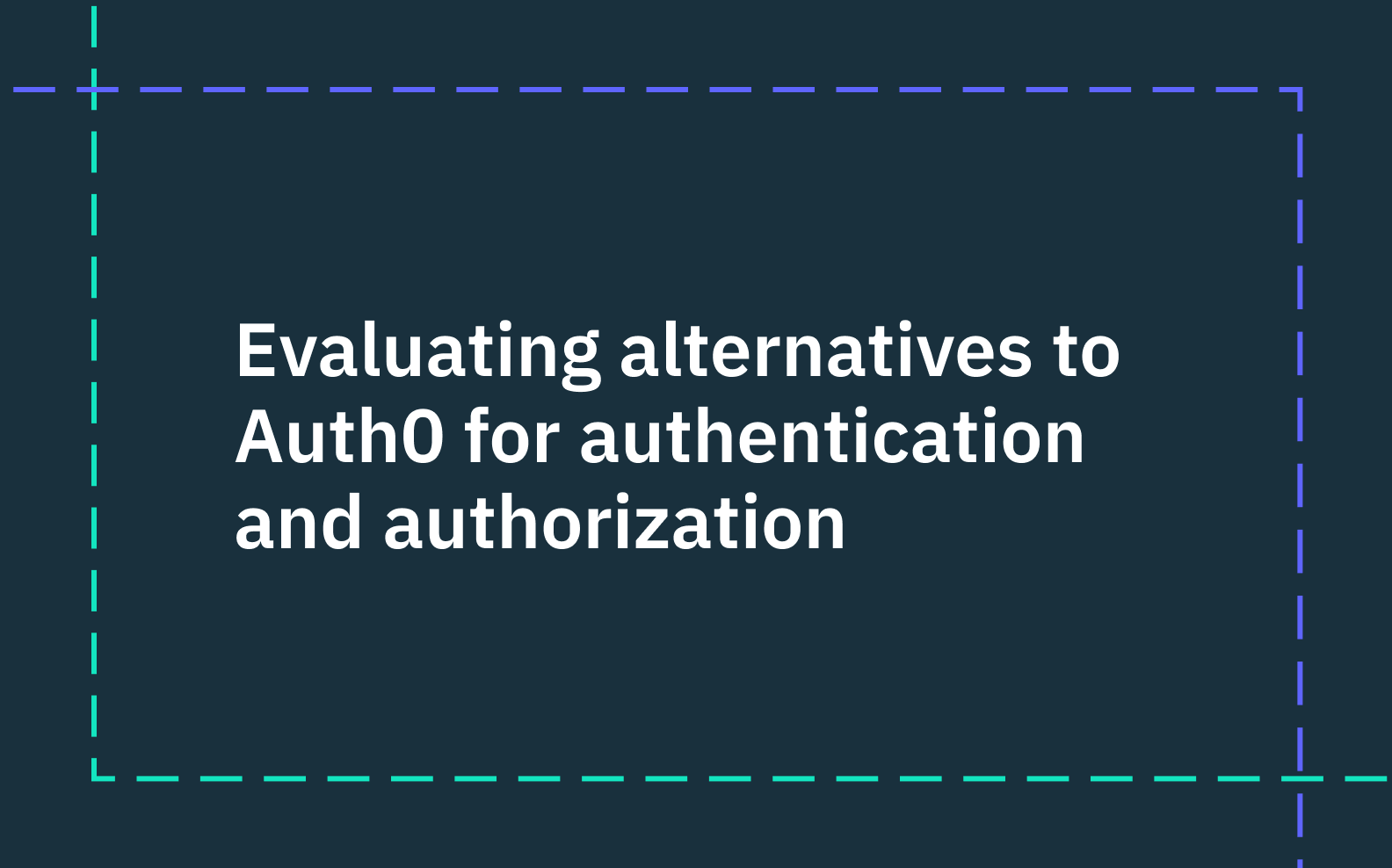Back to blog
Auth0 pricing (and four other reasons to choose Stytch)
Product
Mar 18, 2022
Author: Reed McGinley-Stempel

One of the most common questions we're asked by developers is: "Why should we choose Stytch vs. Auth0?"
It's a fair question. Auth0 has been around for nearly a decade, while Stytch is relatively new to the authentication space (founded in 2020). That said, age isn't everything, and it may even be holding Auth0 back. More on that below.
So, if this is the first time you're learning about Stytch (a special shoutout to readers who got here by searching "Auth0 alternative") we've prepared a list of the key ways in which we outperform the competition — starting with Auth0 pricing and working our way through the flexibility, reliability, and usability of our respective platforms.
Looking for a point-by-point comparison of Stytch vs. Auth0? Check out our complete buyer's guide here.
Let's summarize our five key advantages before diving into the details and exploring why many Auth0 customers are switching to Stytch.
- Cost: Auth0 pricing jumps when you need auth and access management tools beyond the bare minimum, while Stytch offers pay-as-you-go rates that decrease as you scale.
- Flexibility: Stytch solutions can be fully tailored to the look, feel, and flow of your app and brand, while Auth0 limits edits to widget-based customizations.
- Reliability: Stytch offers built-in redundancy and failover logic to mitigate vendor downtime, but Auth0 requires you to BYO integrations with no redundancy allowances.
- Integration: Stytch's docs are easy to read and implement for a quick integration. Meanwhile, Auth0's docs are extremely complex.
- Innovation: Stytch offers a range of frictionless auth solutions through a single platform in addition to breach-resistant passwords, while Auth0 continues to focus on a more traditional password approach.
Now, let's take a closer look.
1. COST
Simply put, Auth0 pricing models and calculators hide the true cost of their services. The more volume you handle and the more features you need, the more you pay, which can make it difficult to forecast costs at scale.
Typically, Auth0 pricing works out to be two to three times higher per user than Stytch. Their free plan offers only limited features, and you're forced to upgrade to enterprise pricing to add even basic passwordless solutions — like OAuth, multi-factor authentication (MFA), one-time passcodes (OTPs), and WebAuthn — or to turn on advanced user role management options like admin roles and consolidated user stores. With Auth0, higher user tiers mean more expensive paid plans, which may require contracts with external marketplace vendors at an additional cost.
Stytch, on the other hand, offers simple, flexible pricing through our partnership model.
With Stytch, pricing starts at a transparent 5 cents per active user with unlimited logins, and it quickly decreases as you scale. That means no monthly commitment and no enterprise plan. Our pricing model aligns with your business model, and we only make money when you authenticate users — so you never pay for anything other than usage.
Don't just take our word for it. You can see our full pricing structure here, including the details of our free plan.
2. FLEXIBILITY
Whether you're a startup or an enterprise, you shouldn't have to compromise the look and feel of your product (or your brand's unique personality and style) for any vendor — even for a service as important as authentication.
In most cases, your first "write" interaction is the user signup flow, which means it's the first chance a user has to form an opinion about your app and how it works. Most drop-off occurs at this stage, so it's critical for the experience to leave users with a positive impression. That's why flexible solutions are core to Stytch's offerings.
Stytch offers both a direct API, which allows you to own your UI and UX from end to end, and highly customizable SDKs for Javascript, React, iOS and Android. Unlike most SDKs, Stytch gives you complete control and enables you to call the Stytch API directly from your browser.
The result is a wide range of sign up and log in options, enabling organizations to build on-brand auth and access management flows.
In fact, Stytch's customizable frontend components work seamlessly within custom domains with no hosted redirect page required. This delivers an auth experience that's fine-tuned to your brand and to your users' expectations. Our adaptability to different auth and access management scenarios is why Gather chose us over the competition.
"When we started thinking about building our auth, I looked at three solutions: Auth0, Magic Link, and Stytch. It became clear playing with each that Stytch was going to be the most flexible."
— Ryan Rosztocy, Founding Engineer, Gather
In comparison, Auth0 stymies their customers' creativity because they prioritize passwords. This requires them to maintain strict control over forms and domains and limits their flexibility to widget-based customizations.
Build auth with Stytch
Pricing that scales with you • No feature gating • All of the auth solutions you need plus fraud & risk
3. RELIABILITY
When it comes to authentication, it's important to provide end users with a seamless experience not just the first time, but every time. That's why Stytch strives to build passwordless authentication solutions you can rely on and simpler yet more secure password-based flows. Our customers depend on us for critical infrastructure, so we invest heavily in ensuring we can maintain exceptional uptime percentages. You can see the results for yourself on our status page.
Stytch builds redundancy into every communication-based auth product, monitoring uptime and using dynamic failover logic to route across multiple providers.
This ensures vendor downtime doesn't impact your platform and that your users can enjoy a high-quality, uninterrupted experience with no single point of failure.
In contrast, Auth0 compels you to provide your own integration for communication APIs, which are required for service-based auth via email and SMS. What's more, the Auth0 platform doesn't allow for any redundancy. While this isn't always front-of-mind for developers choosing an auth provider, we've learned through experience that it's vitally important.
Case in point: at a previous company, our service provider experienced two days of downtime, during which we couldn't authenticate any user visiting our platform. This was extremely painful. It felt like we'd just poured our heart and soul into opening a new restaurant and then had to turn customers away at the door due to a broken stove. It took us over two months to solve the issue by building out a backup provider. Ultimately, our poor decision not to plan for redundancy negatively impacted not only our business but our productivity, since development teams had to be pulled away from core projects they were working on.
Take it from us: Users won't be able to access your services (or give you their money) if you can't reliably authenticate them. And if they detect a dip in service, they're much more likely to churn. It's important to maintain gold-standard uptimes, avoid interruptions, and offer timely service and enterprise support to resolve any issues.
“We experimented with several auth providers, but Stytch was the easiest to use by far. We also saw that Stytch had a number of handy features in the works, and we’d get access to a whole system of integrated, innovative products through one simple integration.”
– Omar Torres, Co-Founder, Chessly
4. EASE OF INTEGRATION
Your time is valuable. Developer to developer, we know that you don't want to spend it implementing auth. You'd rather focus on your core product.
That's why Stytch is designed to get you up and running in minutes, whether you're building an auth solution from scratch or migrating from another platform. It all starts with our clear, easy-to-implement documentation.
"Our product team was blown away by Stytch's ease of use. The integration was effortless compared to other tools, because we had so much support. Partnering with Stytch really eliminated the pain of having to manage and maintain an immense authentication system."
– Paul Bergamo, Product Lead, Bitcoin.com
Auth0's documentation, on the other hand, is incredibly difficult and time-consuming to decipher, adding unnecessary complexity to the integration process. This is largely a byproduct of their various builds and migrations — and the issue is only amplified when you attempt to level up and go passwordless.

Auth0 doesn’t make it easy for you as a customer–with docs that are overly complex and don’t include copy/paste examples for their client libraries.
Authentication is a crucial part of your app, but you shouldn't have to spend days reviewing docs or weeks implementing them. Standard Metrics (formerly Quaestor), chose Stytch for our intuitive docs and our laser focus on the developer experience. Full implementation took their one engineer less than a day — and, within a few months, around 35% of their monthly active users were logging in passwordlessly through Stytch.
5. INNOVATION
The most fundamental difference between Stytch and Auth0 is also the most important. In addition to conventional auth methods like passwords, Stytch offers many more modern options like passwordless authentication, while Auth0's architecture is primarily password-based. That means Stytch is keeping up with the most innovative and forward-thinking auth solutions to provide secure access.
When Auth0 first started out, password-based auth was the norm. Unfortunately, while they've since started exploring passwordless solutions, they've largely maintained the status quo and their passwordless offerings are relatively shallow.
In stark contrast, Stytch was founded on the belief that passwordless authentication is the way of the future.
Passwords are a dated auth method that causes needless friction, frustrated users, and lower conversion rates. They're also much less secure. As internet use has exploded, password reuse has become a ballooning issue. In fact,81% of recent online data breaches involve a weak or stolen password, and the latest industry standards consider all traditional passwords to be "pre-breached."
Luckily, auth technology has evolved to meet this challenge, and passwordless-native platforms like Stytch are leading the way.
With Stytch, you can boost both security and UX with intuitive, low-friction solutions like OAuth and OpenID. They're part of an integrated, all-in-one platform, with an evolving product suite that includes the newest, highest-converting passwordless auth methods, like Google One Tap and embeddable magic links. Google One Tap is a particularly powerful way to improve onboarding and login transactions, and companies that have implemented it have seen impressive results. For example, Pinterest achieved a 47% increase in signups on desktop and a 126% increase in signups on Android.
Great user experiences translate to real business impact. Consider our partners at Lighthouse, an innovative rental platform. Lighthouse originally partnered with Auth0, but they felt hemmed in by the platform's rigidity. After switching to Stytch, they were able to offer more flexible auth and access management experiences to their users — and saw a 62% jump in conversions after they did.
The bottom line
Stytch not only offers more affordable authentication solutions than Auth0, but more flexible, reliable, and frictionless experiences for app developers and their customers.

Discover a modern approach to authentication
So, what does migrating to Stytch entail? Glad you asked. It's actually pretty easy to switch your users to Stytch by following the steps and tips in our handy migration guide.
If you want to learn more about the differences between Stytch and Auth0, visit our Stytch vs. Auth0 comparison page — or reach out to our team to get your questions answered.
Authentication & Authorization
Fraud & Risk Prevention
© 2025 Stytch. All rights reserved.


